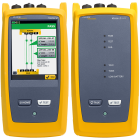Summer Reading: Top 4 for the 4th
July 4, 2018 / General, 101 learning, Installation and testing, Best Practices
While many of our blog readers are well versed in designing, installing and testing cabling systems, some of you may be new to the industry and still trying to make sense of the various performance parameters, standards and testing requirements that today’s cabling systems must meet to support the latest applications, acquire a vendor’s system warranty and ensure a successful installation for your customers.
With the 4th of July holiday this week and perhaps a bit of downtime, we thought it would be a good time for you newbies out there to catch up on a little light summer reading. So we’ve put together a list of the top four back-to-basics Cabling Chronicle blogs to help improve your knowledge on fiber and copper cablingsystems.

Four for Copper
- Copper Cabling’s Balancing Act: You have likely heard copper network cabling referred to as balanced twisted-pair copper cabling, and this back-to-basics blog delves into what all this balance-related terminology means and why should you care.
- Verification, Qualification or Certification: Maybe you’ve been asked to “verify” or “qualify” a cabling system when in reality you should be certifying. Understanding the difference between these three testing choices can help you (and your customers) make the right choice.
- It’s Not All About Color: While a wire map test may seem like the most basic test for copper network cabling, it is actually one of the most critical. Find out in this blog why this test is so important and why the color of the wires that guide your terminations don’t really matter.
- Near End and Far End Crosstalk: NEXT, PSNEXT, PSACRN, FEXT, PSACRF – all of these acronyms surrounding near- and far-end crosstalk parameters can get a bit confusing so check out this blog to get handle on what they mean and what you’re actually testing.
And Four for Fiber
- Tier 1 and Tier 2 Testing: The first step in fiber testing is knowing whether you’re conducting Tier 1 or Tier 2 testing, so you’d better know the difference—not to mention which tester you need and the fact that you can’t skip Tier 1 just because someone requested Tier 2.
- What’s Your Loss Budget: When it comes to fiber systems, the performance parameter you need to worry about is insertion loss, and staying within the insertion loss budget is what ensures your fiber installation can support the application. So understanding the loss budget and how to calculate it is critical. This blog can help.
- MPO Polarity: To properly send data, a fiber optic link’s transmit signal must match the corresponding receiver at the other end – this is where polarity comes in. But polarity can be confusing, especially when you’re dealing with multi-fiber connectivity like MPOs that have three different polarity methods—Method A, B and C. This blog breaks it all down.
- Best Cleaning Practices: From the right tool to the Golden Rule, making sure you’re properly cleaning and inspecting every fiber end face can help you avoid the number one cause of fiber network issues and failures—contamination. Read this blog to make sure you’re on track with fiber cleaning.










